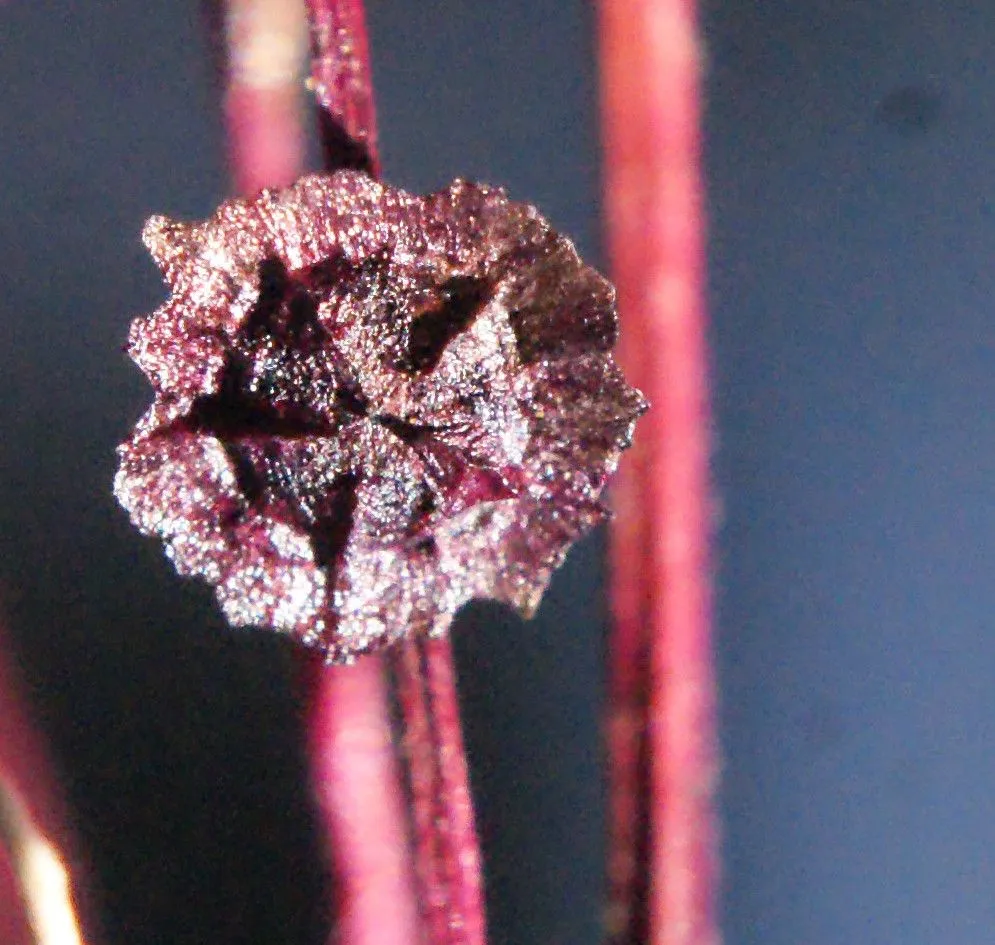
Author: (Spreng.) G.Kadereit, Sukhor. & Uotila
Bibliography: Taxon 70: 542 (2021)
Year: 2021
Status: accepted
Rank: species
Genus: Dysphania
Vegetable: Unknown
Observations: C. Canada to WC. & C. U.S.A., Mexico (Chihuahua)
Winged Pigweed (Dysphania atriplicifolia): A Comprehensive Overview
Winged pigweed, scientifically named Dysphania atriplicifolia, is a notable plant within the Amaranthaceae family. This resilient species has gained attention for its distinctive characteristics and wide geographical range.
Distribution and Habitat
Winged pigweed thrives across a broad spectrum of North America, extending from Central Canada down through the western and central regions of the United States and reaching as far south as Chihuahua in Mexico. This extensive distribution underscores the plant’s adaptability to various climates and soil types, allowing it to flourish in diverse environments.
Botanical Characteristics
Dysphania atriplicifolia stands out with its robust and somewhat succulent structure. Characteristic of the Amaranthaceae family, this plant may exhibit a winged stem, a feature that contributes to its common name. The leaves are typically aromatic, a trait shared with many members of this botanical group, and they may have a somewhat wrinkled or crinkly appearance.
Ecological Role
Winged pigweed performs several key ecological functions. Its ability to grow in disturbed soils makes it an important pioneer species, often colonizing and stabilizing areas that have been altered by human activity or natural disturbances. Additionally, it serves as a food source and habitat for various insects and other wildlife, integrating itself into the local ecosystems where it grows.
Scientific Recognition and Study
The plant was extensively detailed in the scientific literature, with a significant reference being its mention in the 2021 publication of “Taxon” (Vol. 70, p. 542). This academic recognition reflects ongoing interest and research into its classification and properties.
In conclusion, winged pigweed, or Dysphania atriplicifolia, is a fascinating species with a broad range and important ecological roles. Its presence from Canada to Mexico illustrates its adaptability and significance in the plant world.
Deu: meldenblättriger drüsengänsefuß
Eng: winged pigweed, plains tumbleweed, tumbling ringwing
Fra: cycloloma à feuilles d’arroche
En: Winged pigweed, Winged-Pigweed, Tumbling-ringwing
Fr: Cycloloma
It: Cicloma comune, Cicloloma comune
Taken Aug 15, 2009 by Photoflora – Jean-Luc TASSET (©)
Taken Sep 24, 2020 by antoine leblanc-boily (cc-by-sa)
Taken Oct 10, 2011 by Tela Botanica − Marie PORTAS (cc-by-sa)
Taken Oct 10, 2011 by Tela Botanica − Marie PORTAS (cc-by-sa)
Taken Oct 15, 2020 by antoine leblanc-boily (cc-by-sa)
Taken Oct 30, 2015 by Tela Botanica − Liliane ROUBAUDI (cc-by-sa)
Taken Oct 30, 2015 by Tela Botanica − Liliane ROUBAUDI (cc-by-sa)
Taken Oct 10, 2011 by Tela Botanica − Marie PORTAS (cc-by-sa)
Taken Oct 30, 2015 by Tela Botanica − Liliane ROUBAUDI (cc-by-sa)
Taken Oct 30, 2015 by Tela Botanica − Liliane ROUBAUDI (cc-by-sa)
Taken Aug 15, 2009 by Photoflora – Jean-Luc TASSET (©)
Taken Oct 9, 2022 by faciadasan (cc-by-sa)
Taken Oct 15, 2020 by antoine leblanc-boily (cc-by-sa)
Taken Sep 15, 2017 by Photoflora – Benoit BOCK (©)
Taken Aug 15, 2017 by Photoflora – Benoit BOCK (©)
Taken Aug 15, 2017 by Photoflora – Benoit BOCK (©)
Taken Aug 15, 2017 by Photoflora – Benoit BOCK (©)
Taken Aug 15, 2017 by Photoflora – Benoit BOCK (©)
Taken Oct 10, 2011 by Tela Botanica − Marie PORTAS (cc-by-sa)
Taken Oct 30, 2015 by Tela Botanica − Liliane ROUBAUDI (cc-by-sa)
Taken Oct 30, 2015 by Tela Botanica − Liliane ROUBAUDI (cc-by-sa)
Taken Oct 30, 2015 by Tela Botanica − Liliane ROUBAUDI (cc-by-sa)
Taken Oct 30, 2015 by Tela Botanica − Liliane ROUBAUDI (cc-by-sa)
Family: Myrtaceae Author: (F.Muell.) K.D.Hill & L.A.S.Johnson Bibliography: Telopea 6: 402 (1995) Year: 1995 Status:…
Family: Rubiaceae Author: Pierre ex A.Froehner Bibliography: Notizbl. Bot. Gart. Berlin-Dahlem 1: 237 (1897) Year:…
Family: Sapindaceae Author: Koidz. Bibliography: J. Coll. Sci. Imp. Univ. Tokyo 32(1): 38 (1911) Year:…
Family: Asteraceae Author: A.Gray Bibliography: Pacif. Railr. Rep.: 107 (1857) Year: 1857 Status: accepted Rank:…
Family: Fabaceae Author: Medik. Bibliography: Vorles. Churpfälz. Phys.-Ökon. Ges. 2: 398 (1787) Year: 1787 Status:…
Family: Aspleniaceae Author: (Cav.) Alston Bibliography: Bull. Misc. Inform. Kew 1932: 309 (1932) Year: 1932…